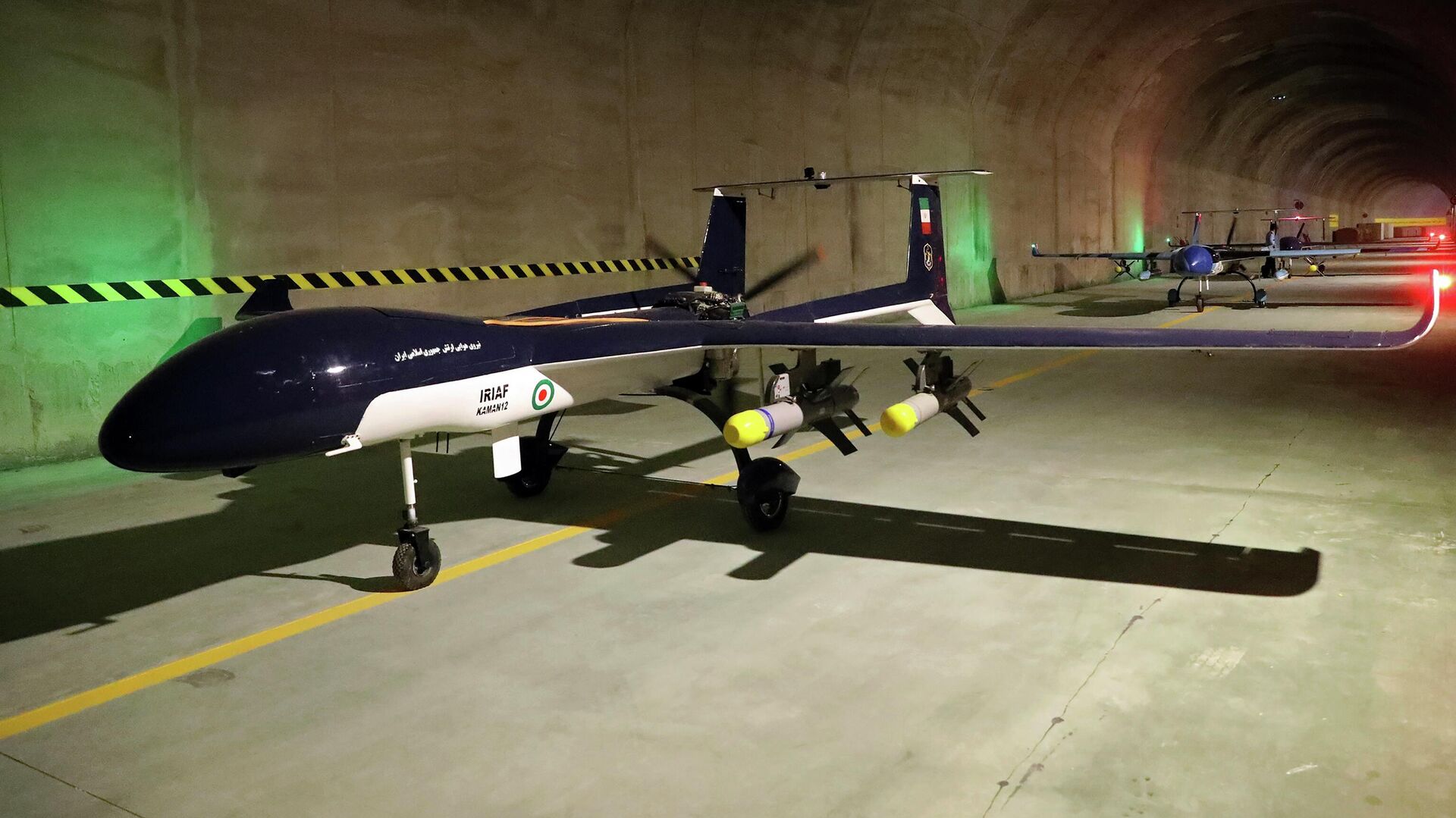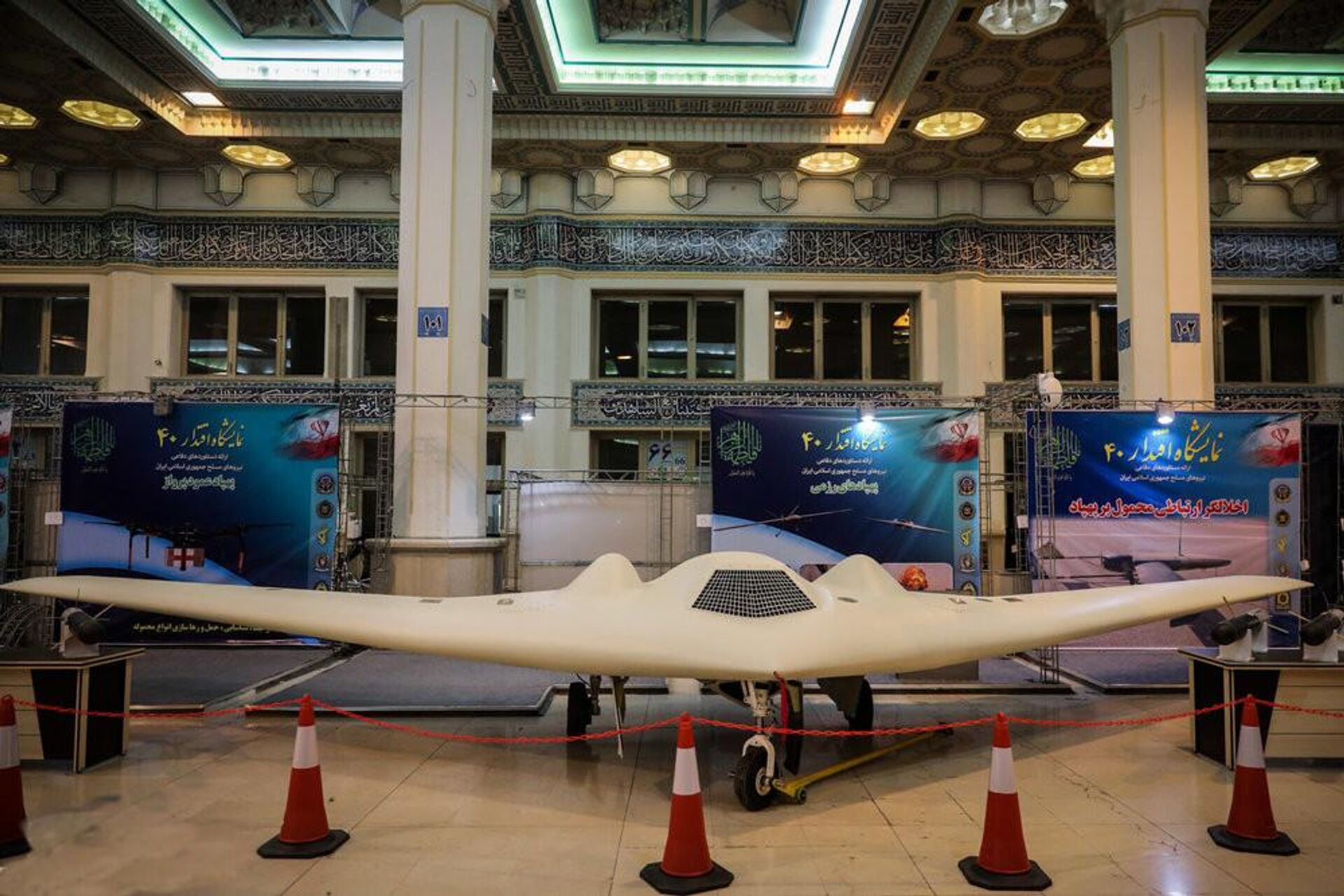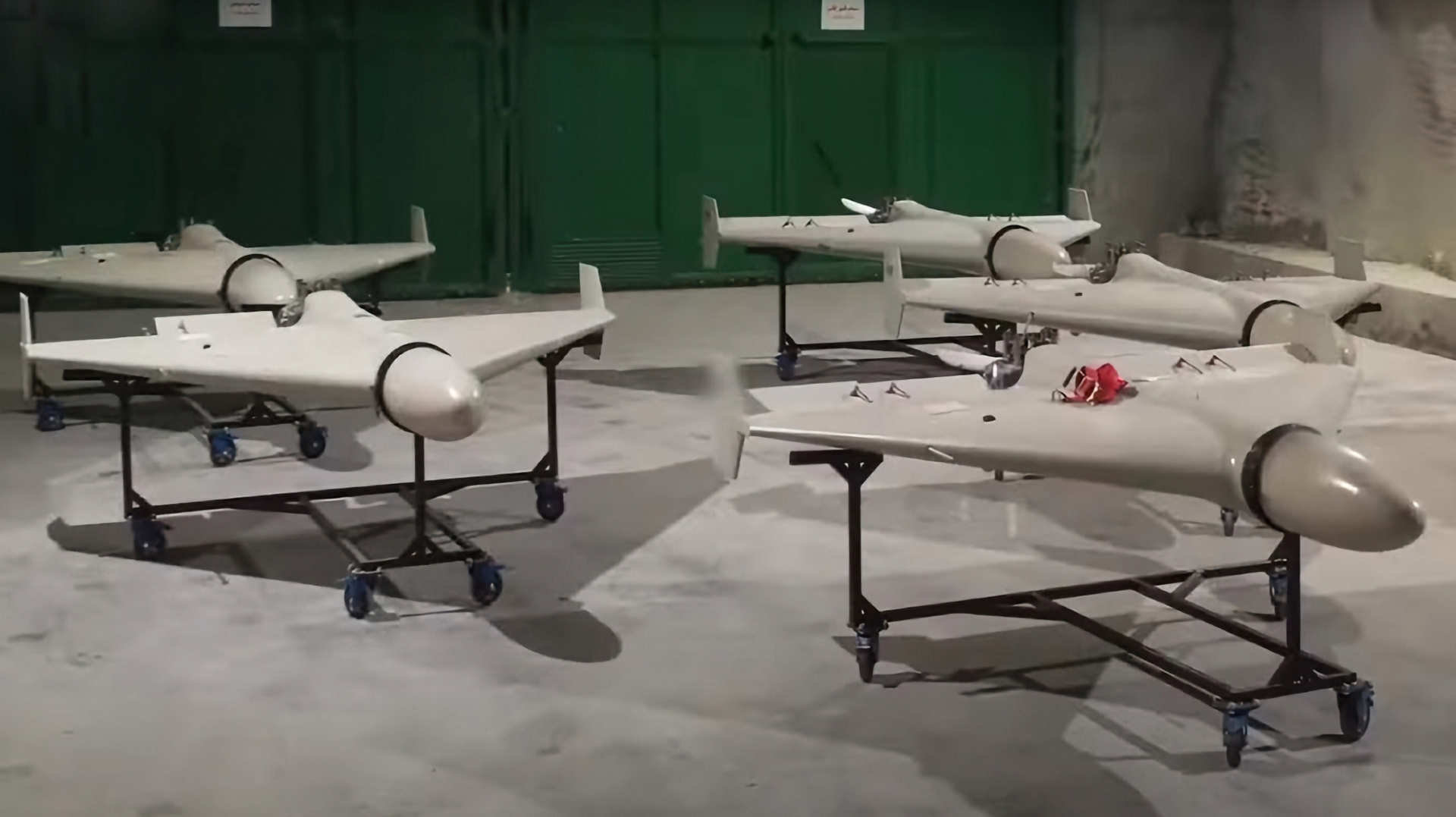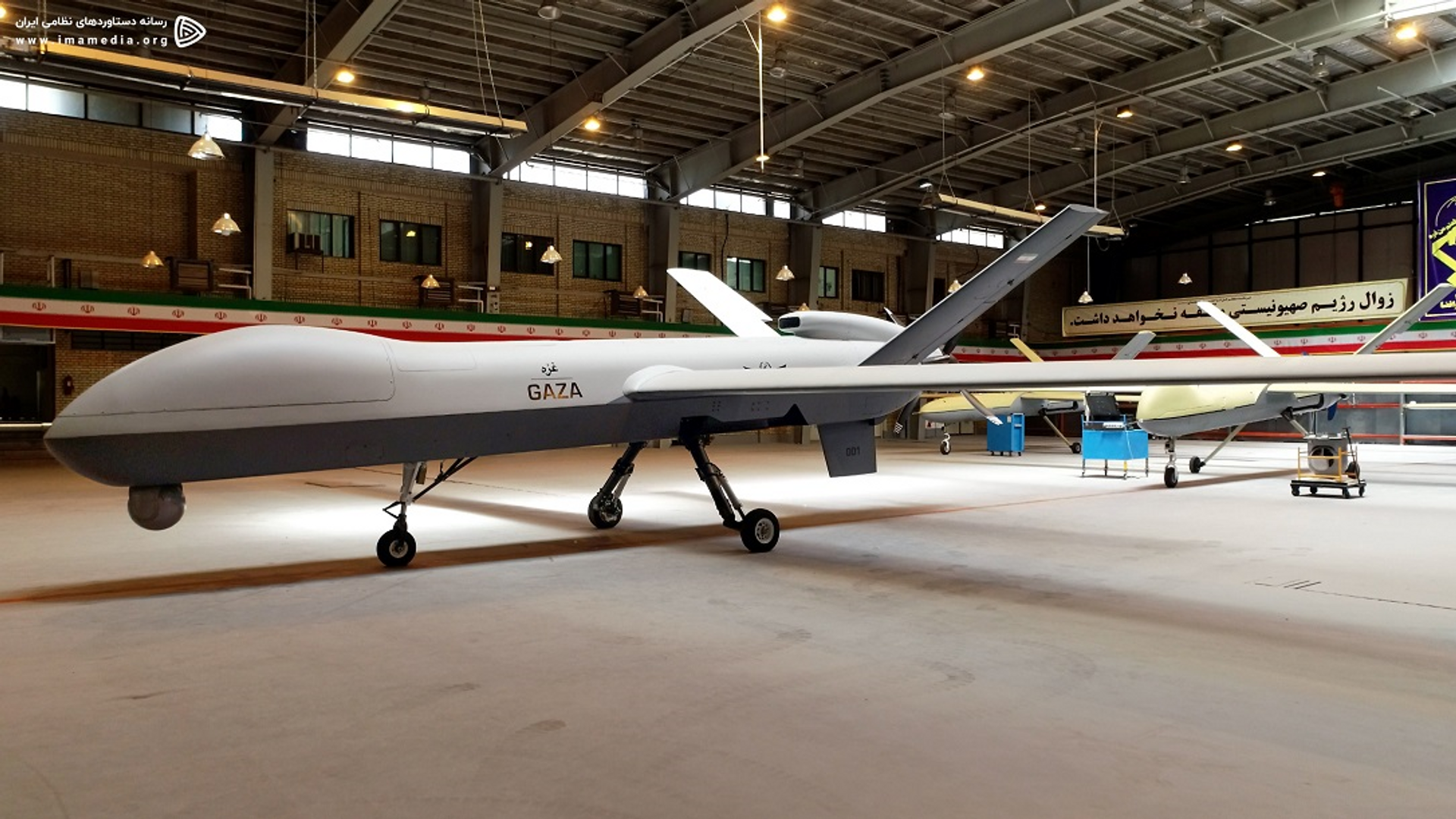https://sputnikglobe.com/20221020/43-years-under-sanctions-how-iran-built-drones-1102475565.html
43 Years Under Sanctions: How Iran Built Drones
43 Years Under Sanctions: How Iran Built Drones
Sputnik International
Although Iran has survived under sanctions for nearly half a century, the country has shown a remarkable ability to produce, reverse engineer, and develop its... 20.10.2022, Sputnik International
2022-10-20T17:56+0000
2022-10-20T17:56+0000
2023-07-16T05:54+0000
military
iran
drone
uav
https://cdn1.img.sputnikglobe.com/img/07e6/08/19/1099975182_0:236:3071:1963_1920x0_80_0_0_0e51f290ad75dc6e1b55df74b21c2312.jpg
Iran became interested in unmanned aerial vehicles (UAVs), or drones for short, in the 1980s during the Iran-Iraq War (1980-1988). The first family of Iranian drones was the Ababil, which were simple mechanisms called “flying munitions.” Together with reconnaissance UAVs developed somewhat later, they were successfully used on the battle fronts.In the post-war period, Tehran decided to concentrate its efforts on the creation and development of unmanned aerial systems. The Iranian aviation industry included several scientific and technical organizations, a number of aircraft construction and aircraft repair plants, as well as numerous related enterprises producing various components. Virtually all the enterprises in this industry, which are supervised by the Islamic Revolutionary Guard Corps (IRGC), are in one way or another involved in the development and production of UAVs.Iran then started the mass production of drones, which could compensate for the insufficient capacity of Iran's Air Force, including the inability to build fully-fledged combat aircraft.Iran has made significant progress in the development and production of a full range of UAVs of all major classes, from light tactical reconnaissance vehicles to heavy reconnaissance and strike systems, both carrying guided aerial bombs and short-range missiles, and barraging munitions, the so-called kamikaze drones.Such progress is based on several fundamentals: scientific and technical cooperation, primarily with China; the use of technologies and components for their own production, obtained officially, semi-officially or unofficially (intelligence); and the acquisition of real samples of American and Israeli drones for the purpose of deep study and possible reverse engineering.Iran has so far produced about 40 models of various drones. The main families (lines) of Iranian UAVs are Ababil, Kaman, Kian, Mohajer, and Shahed.According to experts, Iran's most effective and powerful drones are represented by the Shahed, Mohajer, Kaman, and Kian families.Shahed 129This drone is considered one of the most capable UAVs in Iran's arsenal. Visually, it strongly resembles the US RQ-1 / MQ-1 Predator. It made its first flight in the spring of 2012.Purpose - reconnaissance and aerial target strikes (since 2016)Flight time - 24 hoursRange - 1,700 kmCombat power - 4 Sadid-345 precision-guided munitions, 400 kg payloadFeatures: This drone is a full piston aircraft with 16 wings and is a replica of the Israeli Elbit Hermes 450 UAV that crashed in Iran. According to other reports, it is a copy of the US Predator UAV and the Chinese Wing Loong II.Shahed 136Iran's most effective kamikaze drone, first introduced in 2020.Purpose - striking ground targets from the airSpeed - approximately 180 km/h.Flight time - 10 - 12 hoursRange - 2,000 km (declared by the manufacturers), but according to US experts, its real range is several hundred kilometersCombat power - 40-50 kg of explosivesShahed 149 GazaFirst flight in April 2022.Purpose - reconnaissance and air strikes on ground targetsSpeed - approximately 350 km/h.Flight time - 35 hoursRange - 2,000 kmCombat power - 13 bombs and 500 kg of electronic equipmentFeatures: wingspan - 21 m, turboprop engine.Shahed 171 SimorghPurpose - reconnaissance and intelligence operations with the ability to strike ground targets from the airSpeed - approximately 460 km/h.Flight time - 10 hoursRange - 2,000 kmPayload - unknownCombat power - electronic equipment, possibly a warheadFeatures: the aircraft has a "flying wing" fuselage with modern stealth technology and is equipped with a jet engine. A full-size copy of the US drone RQ-170, captured by Iran in 2011. It is one of two Iranian drones based on the RQ-170, along with Shahed 191 - Saegheh-2 (a smaller copy (RQ-170), with which it is often confused. According to experts, the effectiveness and capabilities of the Shahed 171 Simorg are much lower than those of the RQ-170.Shahed 191 Saegheh-2The model was actively used in Syria. A somewhat smaller copy of the US RQ-170. Shahed 191 was tested in October 2016.Purpose - reconnaissance, surveillance and strikes on ground targets from the air. Capable of carrying high-precision munitions.Flight time - 4.5 hoursRange - 450 kmCombat power - two Sadid-1 missiles, 50 kg payloadKaman 22The first wide-body unmanned aerial vehicle in Iran. It can carry any type of munitions. Tested on February 24, 2021.Purpose - reconnaissance and strikes against targets from the airFlight time - 24 hoursRange - 3,000 kmCombat power - 300 kg of explosives and special equipmentFeatures: Kaman 22 is assembled using US technology. It is modeled after the American MQ-1 Predator drone, with features from the more advanced MQ-9 Reaper. In addition, the Kaman 22 UAV resembles the Chinese CH-5 drone.Kian 2 or Arash 2A heavy kamikaze drone designed to hit critical infrastructure and working radars from air defense systems covering them at a long range of about 1,000-2,000 km. The main purpose of the drone is claimed to be urban infrastructure for "strategic strikes".Purpose - strikes on ground targets from the airFlight time - unknownRange - 1,000-2,000 km (ordnance showed a range of 1,400 km)Combat power - 260 kg of explosivesFeatures: Kian-2 is equipped with a jet engine, Arash-2 with a piston engine with propeller output.Qods Mohajer-6A composite UAV with a rectangular fuselage and a three-bladed propeller. Tested in the first half of 2017.Purpose - reconnaissance and strikes against ground targets from the airFlight time - 12 hoursRange - 200 kmCombat power - up to four precision-guided munitions, 100 kg payload. It can include Almas guided missiles or Qaem air-to-ground glide bombs.Features: It serves as an excellent supplement to the larger Shahed 129.In summary, Iran has made significant progress in the field of unmanned aerial vehicles in recent decades. Using various avenues and opportunities, not always legal ones, it has managed to build an industry that regularly develops new UAV models and launches their production. In all likelihood, current trends will continue in the future.
https://sputnikglobe.com/20221016/iran-tests-air-defenses-that-can-track-aircraft-flying-out-of-us-mideast-bases-1101901913.html
https://sputnikglobe.com/20220922/iran-unveils-new-missiles-drone-at-parades-commemorating-iran-iraq-war-of-1980-1988--photo-video-1101092269.html
iran
Sputnik International
feedback@sputniknews.com
+74956456601
MIA „Rosiya Segodnya“
2022
Sputnik International
feedback@sputniknews.com
+74956456601
MIA „Rosiya Segodnya“
News
en_EN
Sputnik International
feedback@sputniknews.com
+74956456601
MIA „Rosiya Segodnya“
Sputnik International
feedback@sputniknews.com
+74956456601
MIA „Rosiya Segodnya“
iran, drone, uav
43 Years Under Sanctions: How Iran Built Drones
17:56 GMT 20.10.2022 (Updated: 05:54 GMT 16.07.2023) Although Iran has survived under sanctions for nearly half a century, the country has shown a remarkable ability to produce, reverse engineer, and develop its own unmanned aerial vehicles.
Iran became interested in unmanned aerial vehicles (UAVs), or drones for short, in the 1980s during the Iran-Iraq War (1980-1988). The first family of Iranian drones was the Ababil, which were simple mechanisms called “flying munitions.” Together with reconnaissance UAVs developed somewhat later, they were successfully used on the battle fronts.
In the post-war period, Tehran decided to concentrate its efforts on the creation and development of unmanned aerial systems. The Iranian aviation industry included several scientific and technical organizations, a number of aircraft construction and aircraft repair plants, as well as numerous related enterprises producing various components. Virtually all the enterprises in this industry, which are supervised by the Islamic Revolutionary Guard Corps (IRGC), are in one way or another involved in the development and production of UAVs.
Iran then started the mass production of drones, which could compensate for the insufficient capacity of Iran's Air Force, including the inability to build fully-fledged combat aircraft.
Iran has made significant progress in the development and production of a full range of UAVs of all major classes, from light tactical reconnaissance vehicles to heavy reconnaissance and strike systems, both carrying guided aerial bombs and short-range missiles, and barraging munitions, the so-called kamikaze drones.
Such progress is based on several fundamentals: scientific and technical cooperation, primarily with China; the use of technologies and components for their own production, obtained officially, semi-officially or unofficially (intelligence); and the acquisition of real samples of American and Israeli drones for the purpose of deep study and possible reverse engineering.
Iran has so far produced about 40 models of various drones. The main families (lines) of Iranian UAVs are Ababil, Kaman, Kian, Mohajer, and Shahed.
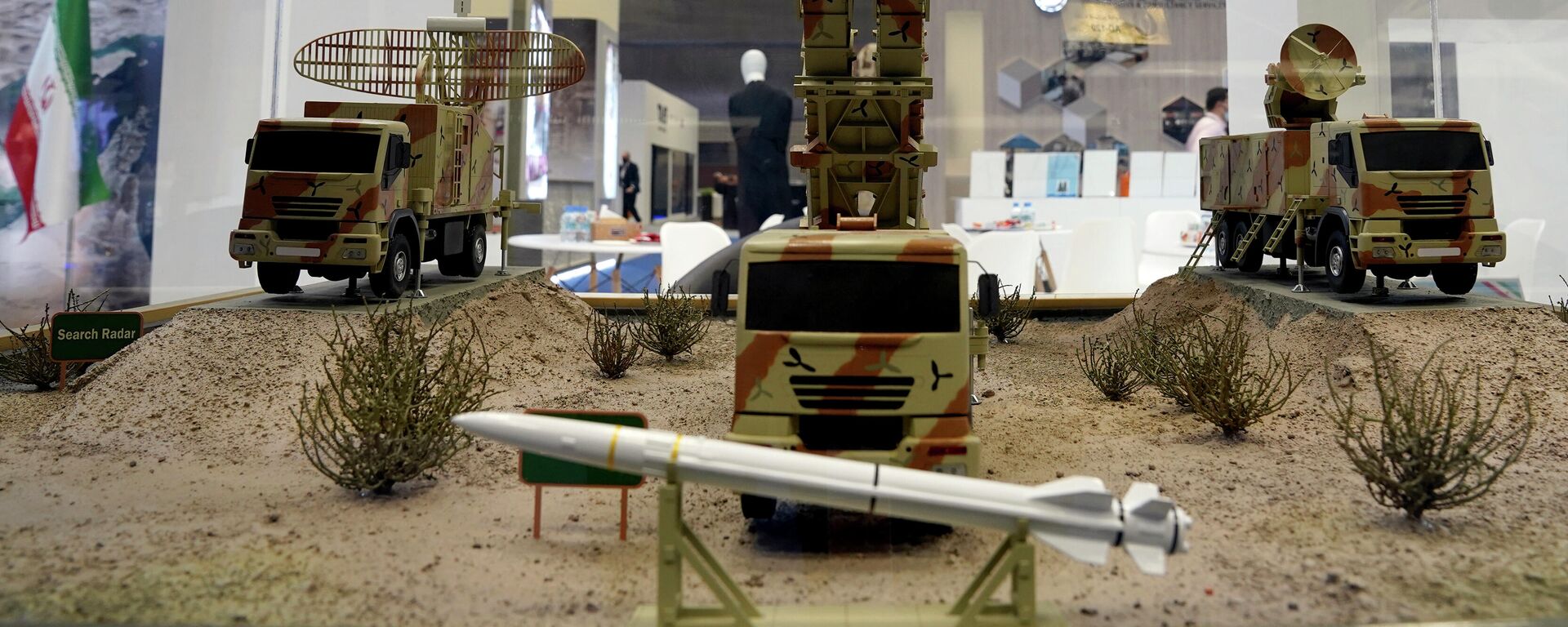
16 October 2022, 12:54 GMT
According to experts, Iran's most effective and powerful drones are represented by the Shahed, Mohajer, Kaman, and Kian families.
This drone is considered one of the most capable UAVs in Iran's arsenal. Visually, it strongly resembles the US RQ-1 / MQ-1 Predator. It made its first flight in the spring of 2012.
Purpose - reconnaissance and aerial target strikes (since 2016)
Combat power - 4 Sadid-345 precision-guided munitions, 400 kg payload
Features: This drone is a full piston aircraft with 16 wings and is a replica of the Israeli Elbit Hermes 450 UAV that crashed in Iran. According to other reports, it is a copy of the US Predator UAV and the Chinese Wing Loong II.
Iran's most effective kamikaze drone, first introduced in 2020.
Purpose - striking ground targets from the air
Speed - approximately 180 km/h.
Flight time - 10 - 12 hours
Range - 2,000 km (declared by the manufacturers), but according to US experts, its real range is several hundred kilometers
Combat power - 40-50 kg of explosives
First flight in April 2022.
Purpose - reconnaissance and air strikes on ground targets
Speed - approximately 350 km/h.
Combat power - 13 bombs and 500 kg of electronic equipment
Features: wingspan - 21 m, turboprop engine.
Purpose - reconnaissance and intelligence operations with the ability to strike ground targets from the air
Speed - approximately 460 km/h.
Combat power - electronic equipment, possibly a warhead
Features: the aircraft has a "flying wing" fuselage with modern stealth technology and is equipped with a jet engine. A full-size copy of the US drone RQ-170, captured by Iran in 2011. It is one of two Iranian drones based on the RQ-170, along with Shahed 191 - Saegheh-2 (a smaller copy (RQ-170), with which it is often confused. According to experts, the effectiveness and capabilities of the Shahed 171 Simorg are much lower than those of the RQ-170.
The model was actively used in Syria. A somewhat smaller copy of the US RQ-170. Shahed 191 was tested in October 2016.
Purpose - reconnaissance, surveillance and strikes on ground targets from the air. Capable of carrying high-precision munitions.
Combat power - two Sadid-1 missiles, 50 kg payload
The first wide-body unmanned aerial vehicle in Iran. It can carry any type of munitions. Tested on February 24, 2021.
Purpose - reconnaissance and strikes against targets from the air
Combat power - 300 kg of explosives and special equipment
Features: Kaman 22 is assembled using US technology. It is modeled after the American MQ-1 Predator drone, with features from the more advanced MQ-9 Reaper. In addition, the Kaman 22 UAV resembles the Chinese CH-5 drone.
A heavy kamikaze drone designed to hit critical infrastructure and working radars from air defense systems covering them at a long range of about 1,000-2,000 km. The main purpose of the drone is claimed to be urban infrastructure for "strategic strikes".
Purpose - strikes on ground targets from the air
Range - 1,000-2,000 km (ordnance showed a range of 1,400 km)
Combat power - 260 kg of explosives
Features: Kian-2 is equipped with a jet engine, Arash-2 with a piston engine with propeller output.
A composite UAV with a rectangular fuselage and a three-bladed propeller. Tested in the first half of 2017.
Purpose - reconnaissance and strikes against ground targets from the air
Combat power - up to four precision-guided munitions, 100 kg payload. It can include Almas guided missiles or Qaem air-to-ground glide bombs.
Features: It serves as an excellent supplement to the larger Shahed 129.
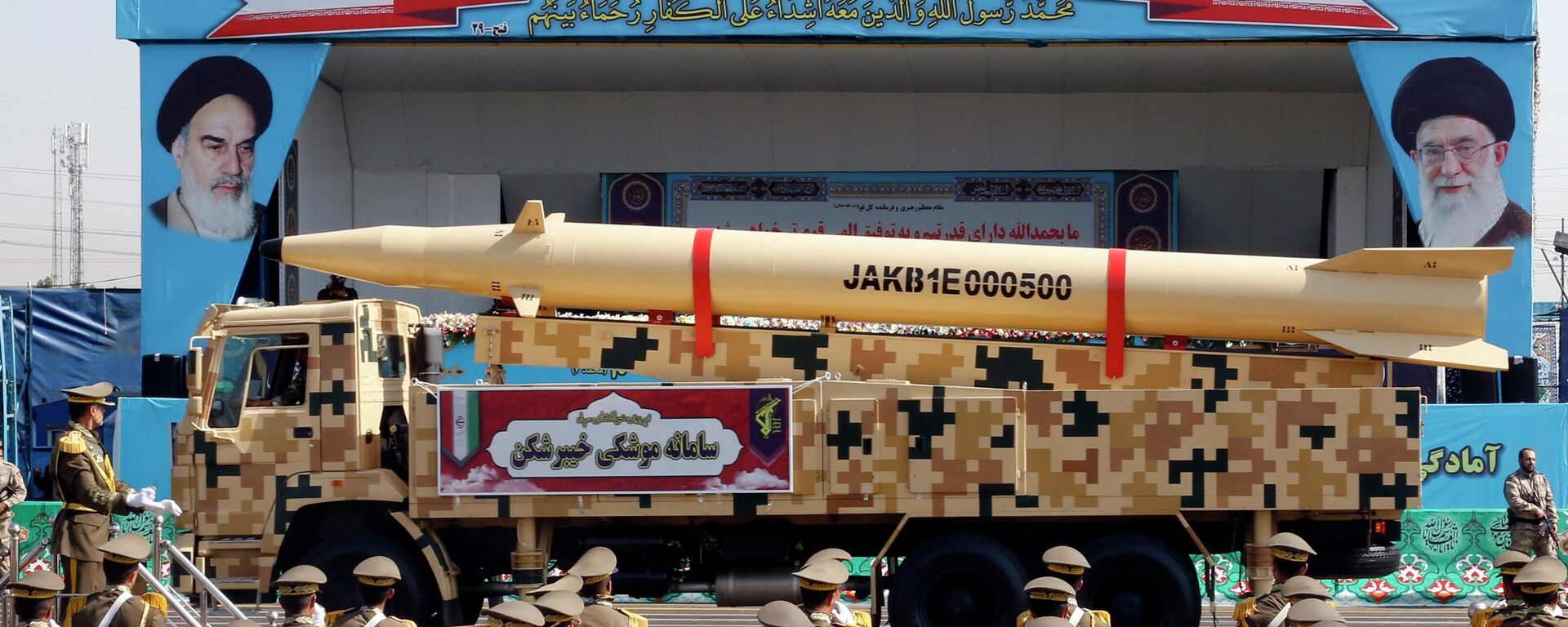
22 September 2022, 14:22 GMT
In summary, Iran has made significant progress in the field of unmanned aerial vehicles in recent decades. Using various avenues and opportunities, not always legal ones, it has managed to build an industry that regularly develops new UAV models and launches their production. In all likelihood, current trends will continue in the future.
